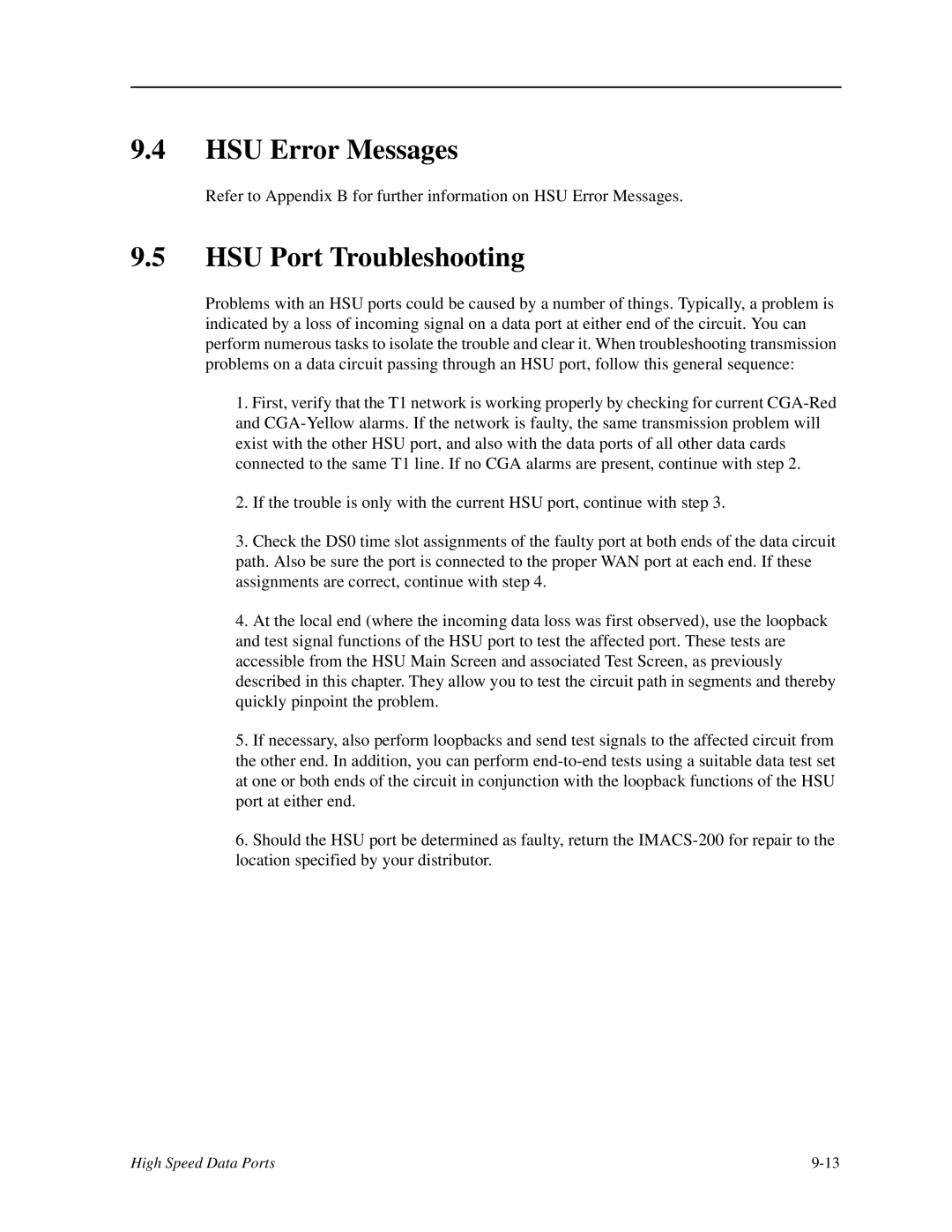9.4HSU Error Messages
Refer to Appendix B for further information on HSU Error Messages.
9.5HSU Port Troubleshooting
Problems with an HSU ports could be caused by a number of things. Typically, a problem is indicated by a loss of incoming signal on a data port at either end of the circuit. You can perform numerous tasks to isolate the trouble and clear it. When troubleshooting transmission problems on a data circuit passing through an HSU port, follow this general sequence:
1.First, verify that the T1 network is working properly by checking for current
2.If the trouble is only with the current HSU port, continue with step 3.
3.Check the DS0 time slot assignments of the faulty port at both ends of the data circuit path. Also be sure the port is connected to the proper WAN port at each end. If these assignments are correct, continue with step 4.
4.At the local end (where the incoming data loss was first observed), use the loopback and test signal functions of the HSU port to test the affected port. These tests are accessible from the HSU Main Screen and associated Test Screen, as previously described in this chapter. They allow you to test the circuit path in segments and thereby quickly pinpoint the problem.
5.If necessary, also perform loopbacks and send test signals to the affected circuit from the other end. In addition, you can perform
6.Should the HSU port be determined as faulty, return the
High Speed Data Ports |
